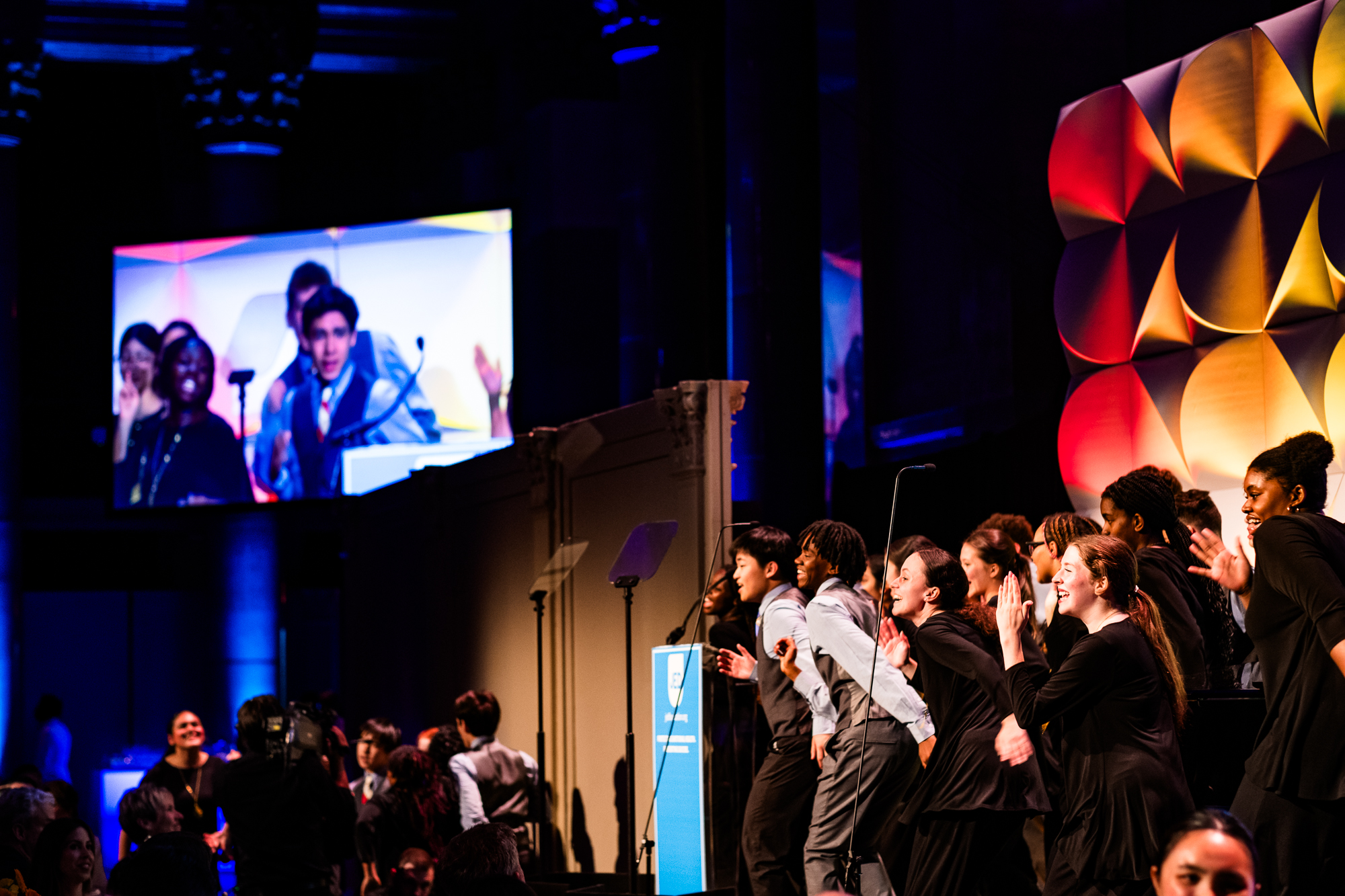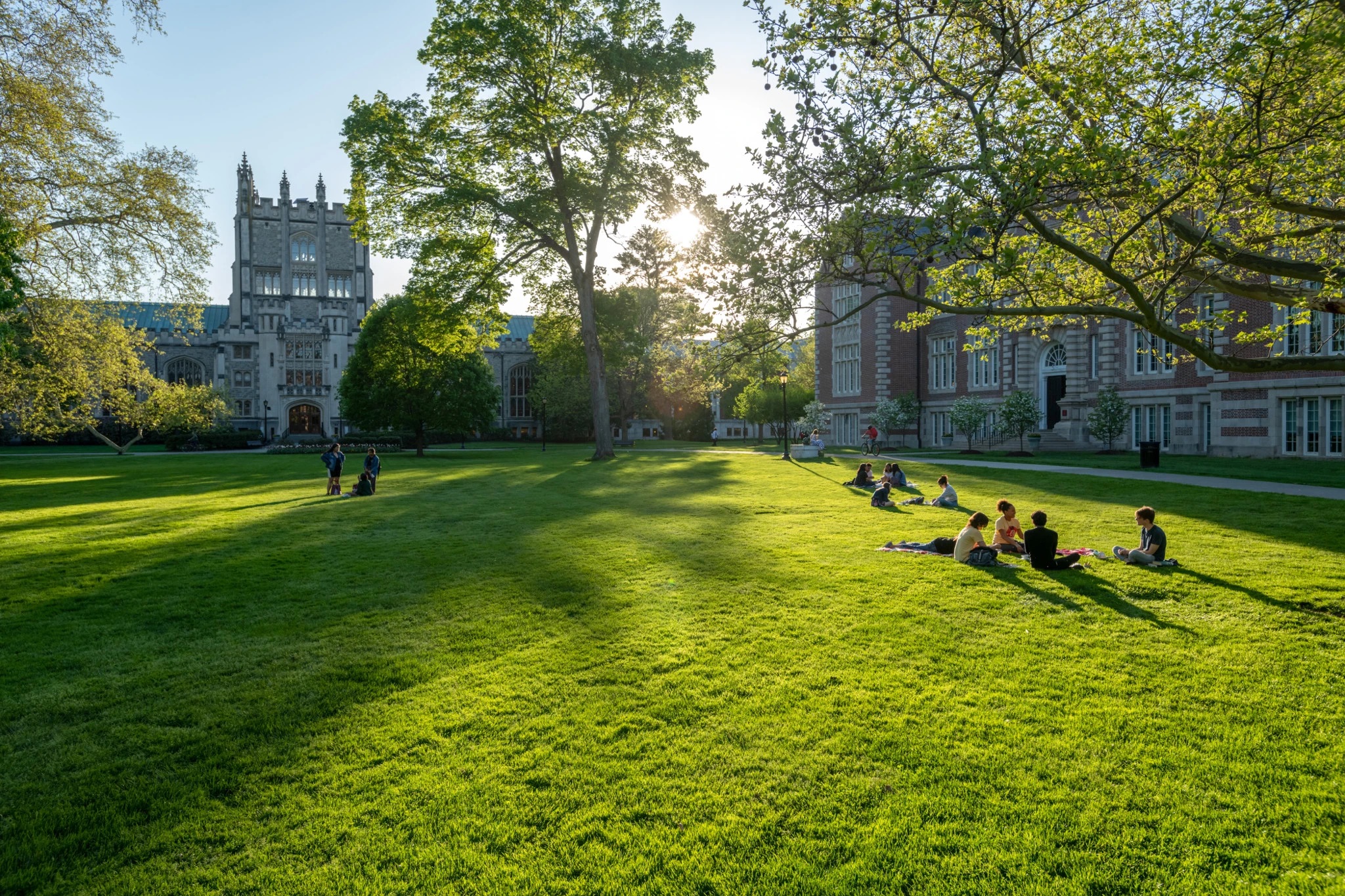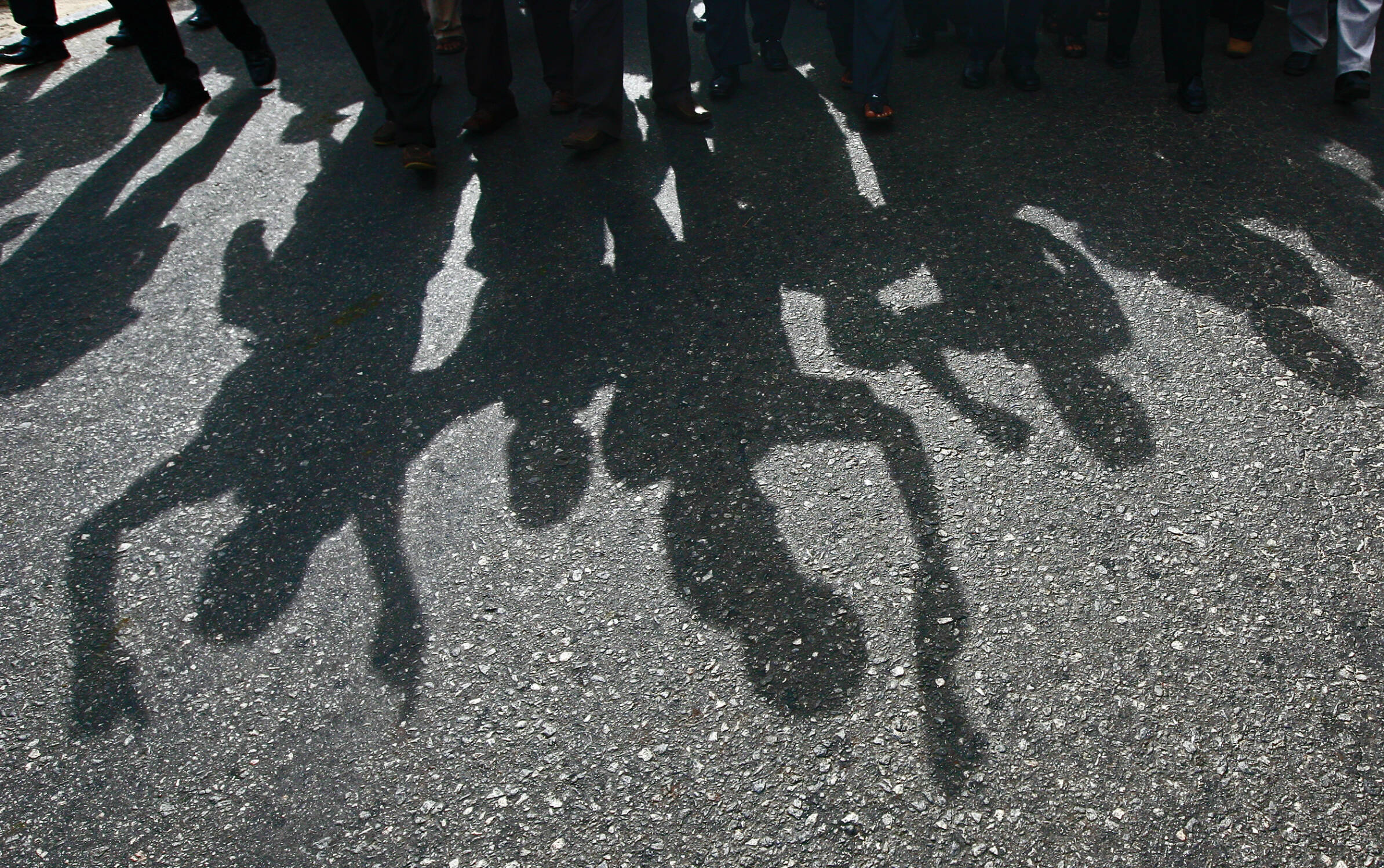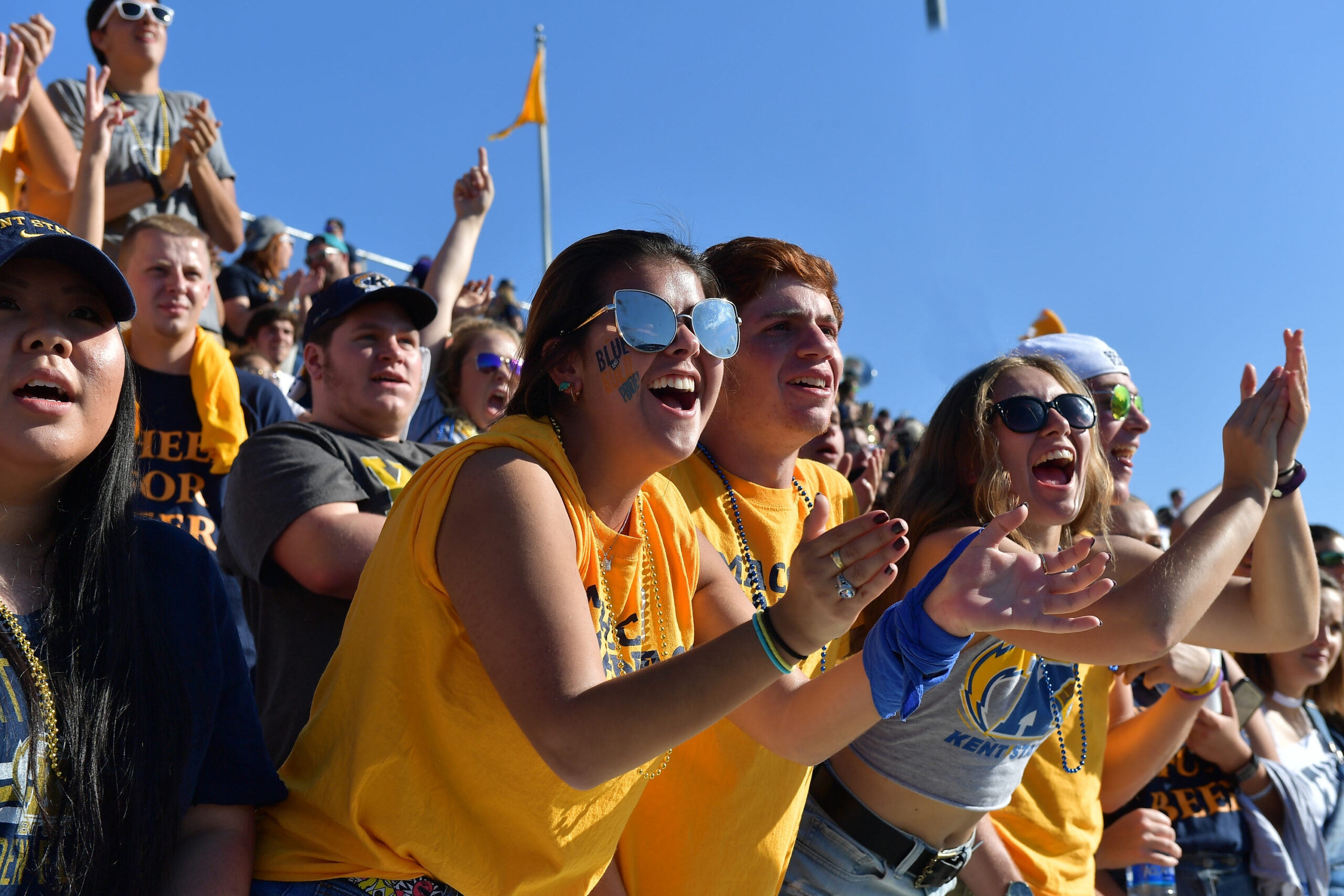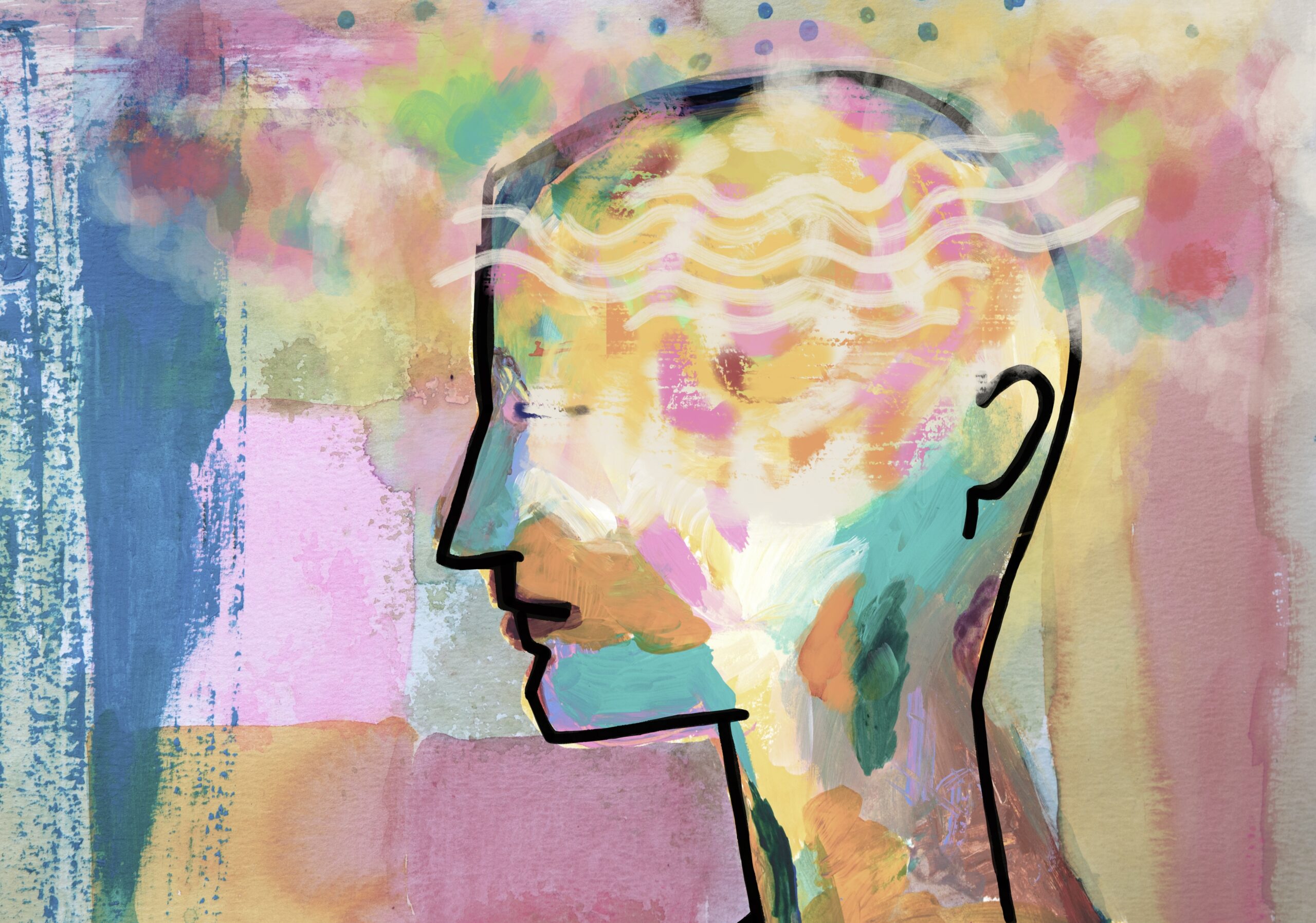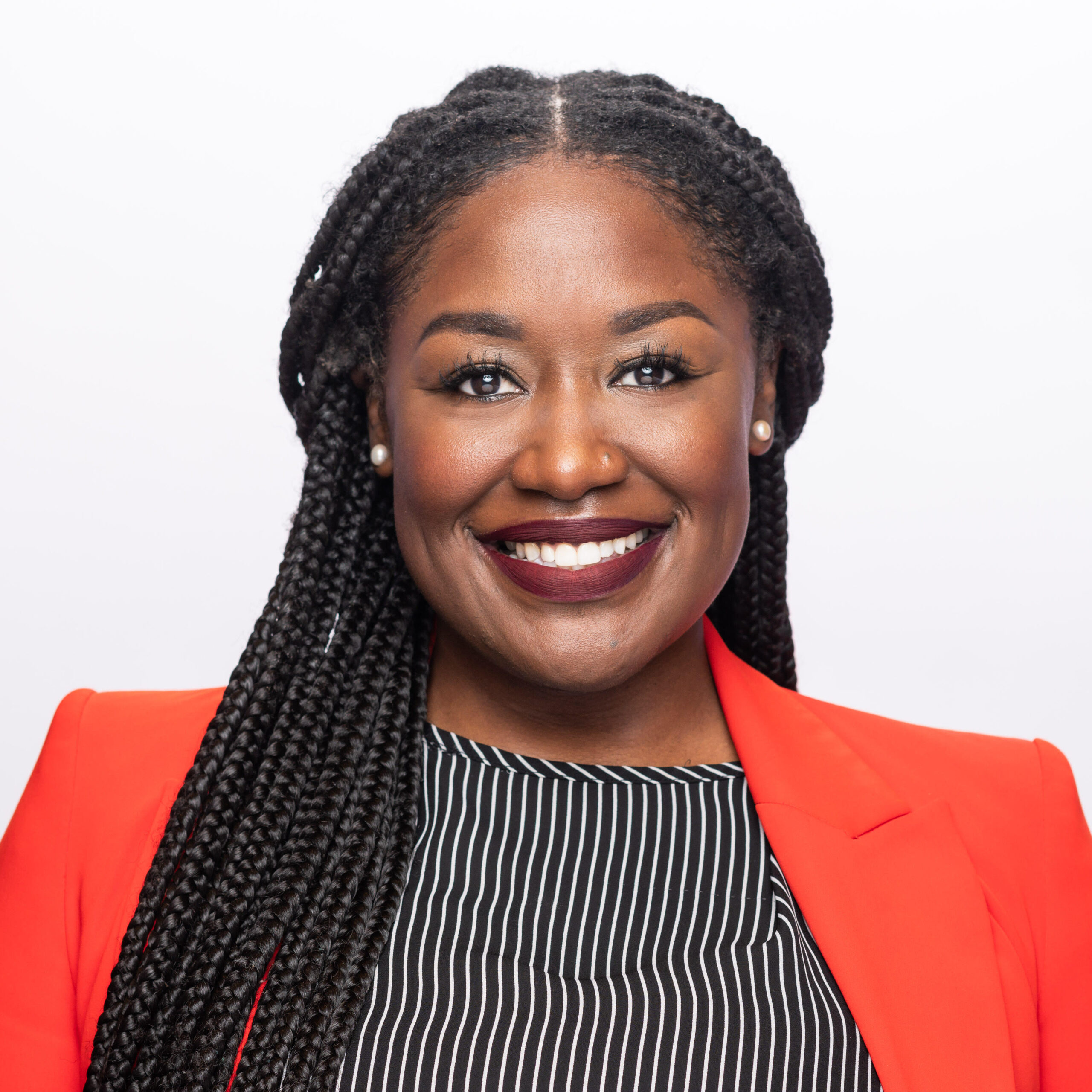The following is a transcript of LearningWell Radio Episode 1: Understanding Languishing and Flourishing with Dr. Corey Keyes. You can listen to the episode on Apple Podcasts.
Marjorie Malpiede: This is LearningWell Radio, the podcast of LearningWell Magazine, covering the intersection of higher education and lifelong wellbeing. I’m Marjorie Malpiede, the Editor of LearningWell and your host today. Our first guest for our first episode of LearningWell Radio is Dr. Corey Keyes, the renowned sociologist and psychologist who has introduced groundbreaking work in the areas of flourishing and languishing. Welcome, Corey.
Corey Keyes: Hello and good morning.
MM: As a faculty member at Emory University, Dr. Keyes taught The Science of Happiness. He has a new book coming out called Languishing, and it’s actually available this week. Corey, let me say, I knew that you were a brilliant sociologist and psychologist, but I did not know that you were such a talented writer. Your book is really terrific.
CK: Thank you. I appreciate that. I take great pride in trying to write in a way that communicates the nuances and stories behind the numbers of our science.
MM: Well, I have to say that is exactly what my reaction was. I loved your opening, where you take us back to your teenage years and you’re listening to Jackson Brown’s “Running On Empty.” Loved that song. And of course, the reference to the King Biscuit Flower Hour. That was awesome. What a throwback. But the whole book is like that. It’s really very enjoyable to read. So anyway, big thumbs up for me as one reader, one reviewer, but let’s get into the book a bit and give a little bit of a preview for our audiences. First thing I’d like to ask you is, what motivated you to write this, Corey? You’ve been publishing for a long time, but this is really something special.
CK: Well, for a long time I’ve had a passion for advocating for better treatment and approaches to helping people with mental illness, and especially trying to get people invested in preventing it in the first place. Because I know we’re all on the same page when we hear again and again in the news that there’s a crisis in mental illness and that it’s growing. And the fact that I continue to hear about this crisis and that it’s growing, has led me to feel I’ve heard this enough, because the problem is nothing is changing. And I’ve waited and done the science for 25 years on promoting positive mental health in order to prevent, and I’ve felt that the science was solid enough, that there was enough there to write a book. And my dream is that this begins to encourage public health systems and systems like higher education, not the least of which I would also hope in public K-12 education, to begin thinking about prevention by promoting flourishing. So, my book is about trying to change the discourse and introduce another way to deal with the crisis of mental illness by promoting good mental health.
MM: Yeah, and it really does come across very loud and clear in the book. Reading it, it’s clear that it’s about the reader, so it will be about the person who could be benefiting from this information, but it’s also about all the sort of systems and institutions that influence what you describe as flourishing and languishing. I think my next question, for people who think they know the term but really don’t, I think commonly don’t, is how would you describe languishing? Because it’s not always what people think it is.
CK: No. And in fact, I think sometimes the simple descriptors don’t do it justice, because people will use the words either, “Meh,” which Adam Grant did in his New York Times op-ed, or “Blah.” And I don’t think those two terms do it justice, because I want to get back to the way I measure it, which is 14 questions that constitute measurement of the presence of good mental health, which I refer to flourishing, and languishing is the absence of some of these very important things. So to languish is not only to have lost a sense of interest in life or you’re not feeling happy or satisfied, but along with that, at least six or more things are missing in your life, like a sense of purpose, a sense that you’re growing as a person, a sense of self-acceptance that you like most parts of your personality. There’s some social components, like a sense that you are making contributions or you will make a contribution to the world or your community, a sense of belonging to a community, a sense of coherence, which is that you can make sense of what’s going on in the world around you. So, languishing is a constellation of things, but it’s the absence of functioning well, combined with the absence of feeling anything good or not feeling much of anything about your life. So in that sense, languishing is a lot more than just, “Blah.” It’s the absence of what makes life meaningful and gives you a sense that you matter and so forth.
MM: So, something you say in the book is interesting to me and it gets to that same sense of, do we really understand the language around this? So you say, “Don’t be fooled by feelings.” Explain that a little bit and how people may not understand if they’re languishing or flourishing.
CK: I think there is this obsession, and I think we in this country are particular leaders in the obsession with happiness, or what I would call the emotional part of flourishing, what I call the emotional wellbeing. This gets a lot of attention, and indeed, every year there’s what we call the World Happiness Report, which measures things like life satisfaction, “Do you feel satisfied or do you feel happy about your life?” And we rank countries based on the happiest and think they’re doing really well, and those countries that aren’t very happy. But flourishing is so much more feeling good. And I argue that if you focus only on and prioritize only feeling good, it will not be your North Star. ‘Cause I think of flourishing as my North Star because it’s what kept me in recovery from my own mental disorders of depression and PTSD, and it’s where I feel most at home. If you only prioritize feeling good without functioning well, you will not be doing well. And not the least of which is there are college students, a lot of them, about 20%, that would meet the criteria for flourishing in terms of happiness or feeling good, but they’re languishing when it comes to the criteria of functioning well. That means they have low levels of either psychological or social wellbeing, or both. And they have five times the rate of mental illness as those students who are flourishing. And by flourishing, I mean they’re functioning well. They have six or more of the criteria of functioning well every day or almost every day, combined with feeling good. So that in and of itself suggests that feeling good is not enough of a criteria or it cannot be considered a gold standard alone for doing well in life or even be considered mentally healthy. It’s not the feeling good, the feeling happy that’s really driving the benefits of flourishing, it’s the functioning well. Purpose in life, belonging, contribution, mastery, growth, and acceptance, all those good things that represent that we’re doing well in life. And so I always argue, put functioning well first and you will feel good about a life that’s meaningful and has substance.
MM: I think that’s so interesting because so many of us just think about the standards around feelings, happiness, or sadness, or excitement, or motivation, and we are not really thinking about the processes behind that. So that’s a really interesting way of looking at it. And is this really what you’d call your dual continuum model, that you can be mentally ill and mentally healthy at the same time?
CK: I review, in one of the chapters, an array of evidence that supports what I call the dual-continuum model, not the least of which is the research on the neuroscience of emotions. Now, I didn’t do this research, but I’ve reviewed it, and a lot of it is focused on negative and positive emotions, sadness in particular, and happiness. What they found in the brain is that sadness and happiness share some things in common when it comes to being activated in our brain, but they have a lot of distinctive things that go on. So when we’re feeling sad, the fact that they don’t overlap completely, meaning that when we’re sad, happiness isn’t completely downregulated in our brain, that’s not the case. We can feel both sad and happy at the same time, because they don’t share everything in common when it comes to activation in our brain. And I was writing about this very thing in my book when I realized that Susan Cain was about to publish a book as I was writing my book, and she wrote a book called Bittersweet. And I was writing about the fact that you can have bittersweet moments and feelings precisely because the brain is wired in the two continuum when it comes to just emotions. You can feel a little happy and a little sad at the same time. And on college campuses, I used to love teaching this particular part of my Happiness class during the spring semester when I had almost all graduating seniors. And as we got closer and closer to graduation, it became clear and clear that they understood this because they were feeling poignancy and bittersweet about their time at college and the fact that they now were about to leave it. They felt happy because they had accomplished something worthy of their effort and they felt sad because they were leaving behind something meaningful. So it goes much deeper than that. And mental health and mental illness belong to separate continuums. They’re correlated. But not correlated so strongly that the absence of mental illness means that you’re automatically flourishing. So, there is very strong evidence in a lot of that research I’ve done and done with colleagues, even at the genetic level, showing that we inherit two sets of genes. One set is what I would call risks, genetic risks for mental illness, and then there’s flourishing or positive mental health, which is also equally heritable as things like depression. But there’s only a modest overlap of the genetic variance or the genes for mental illness and mental health. So that means you can inherit a low genetic risk for something like depression, but the absence of genetic risk for depression doesn’t mean that you’ve also inherited a high genetic potential to flourish. But it also goes the opposite way, Marjorie, you could inherit a high genetic potential for depression, but you could have also inherited a high genetic potential for flourishing. And we now know that genes alone do not determine our outcomes. It requires environmental activation of a lot of our genes. So as I like to say, when you’re in that situation where you’ve inherited high genetic risks along with high genetic potential, you ask yourself the version of the negative wolf and the bad wolf, which one wins? The one we feed. Right? So there’s very strong evidence of the dual-continuum model, and that makes the case very strongly that even if we could find a cure, and we’re not anywhere close, even if we could cure all mental illnesses tomorrow, it wouldn’t necessarily mean everyone’s mentally healthy, and we could have just left them in another equally bad condition, languishing.
MM: So, Corey, let me just say, what I love about your work is that it gives people hope, and it looks at these issues in a way that not just destigmatizes them, which you’ve done, but also allows people to give themselves a bit of a break around this. But let’s talk about Languishing and why you wrote this, because so many people are languishing. And you talk about the pandemic and how that obviously accelerated these issues, but also, they weren’t the cause of them. In fact, I think one of the things you say is, because we were sort of sliding into languishing, it was harder for us to be resilient to what happened in the global pandemic, if I got that right? But let me ask a few questions again about the mental state and how people can get out of it. So you talk about why languishing is really a risk to your mental and physical health. Can you talk a little bit more about that?
CK: Sure. In fact, I list at the very beginning a lot of evidence that supports, I call it the 13 reasons why you want to take languishing very seriously, and why we want better mental health and flourishing. Not the least of which I haven’t focused as much on physical health, there’s a little evidence I review when it comes to aging, but the one in particular that really stood out for me is this very strong body of evidence that has to do with what’s called the conserved transcriptional response to adversity. Not my words. That’s the words that some biologists and geneticists gave to this genetic propensity we all have. And the CTRA is activated when we experience adversity, and it’s not healthy for us, because when that CTRA, forgive the abbreviation ’cause it’s a lot to say, is activated, it downregulates antibody production, which is not good. We want antibodies for our immunity, immune responses. So when the CTR is activated, antibody production is suppressed and inflammation is accentuated or activated. Again, inflammation in and of itself is not good for us. And so researchers have been looking for things that actually buffer, mitigate the CTRA when we are experiencing adversity. And here is the amazing thing about the distinction between feeling and functioning when it comes to flourishing. Feeling happy and satisfied has no relationship to modulating the CTRA, but when you have higher levels on functioning well, that is, that goes into my measurement of flourishing, higher levels of particularly psychological wellbeing, people then have a much more modulated or controlled CTRA response. It means that if you are functioning well and you are experiencing stress and demands and adversity, you are protected against the CTRA. And if you aren’t functioning well, higher psychological wellbeing, the CTRA is activated very strongly when you experience adversity. So that’s just one very strong physical underlying genetic /physical response. It’s deeply connected to the functioning well part of flourishing, not the feeling good.
MM: So, if I’m understanding this correctly, it’s almost like you can strengthen your flourishing muscle, so to speak. Right? To have some of what is happening in terms of the languishing and the conditions and elements around that, you can influence or even prevent it. Correct?
CK: Yes. In fact, there’s two studies I reviewed that I just love, one of which is in the work. And you can think of college, a university setting in the same way you can think of a workplace. And this particular study was done in Australia, and they asked workers, “Yes or no, are you currently working in a high stress or hostile, if you will, work environment?” That was the beginning of the study. And then they measured psychological distress over time, and they measured at time one their level of positive mental health. What was remarkable, is over time, if you were flourishing, working in a high stress or high conflict work environment did not result in any more distress than compared as those who are working in a low stress, low conf environment. But if you were languishing and working in a high stress and high conflict work environment, you had a markedly higher increase in distress over time than if you were flourishing. So flourishing in the work settings protected you from having stress and conflict undermine your mental, emotional life. And then there was this second study that I reviewed that followed people over a three-week period and every day asked them whether they had experienced any of several sources of stress, things like the typical sources of stressors, like there’s conflict at work, you had an argument with your boss or your spouse or your friend and so forth. What was amazing about this study, was if you were flourishing, you experienced the same amount of sources of stress as those who are languishing. And in fact, in a three-week period, 84% of the days of those three weeks were filled with sources of stress. So most days. You only had three days out of the three-week period where you didn’t have any source of stress. So everyone was experiencing stress, but then they measured negative mood that day. And here’s the remarkable thing, if you were flourishing and you experienced source of stress, you’re much less likely to have negative mood as a result of it compared to those who are languishing. If you’re languishing, those sources of stress resulted in a much more negative and foul mood at the end of the day than if you are flourishing. So it’s not like if you’re flourishing, you don’t have bad days, you have as many bad days, if you will, or sources of stress at least as those who are languishing. But again, there’s something about flourishing that protects you from having bad things really result in bad feelings. Again, we don’t know why, but then again, I go back to the following thing. Did we not need to know how smoking caused cancer in order to prevent cancers from smoking? No, we just needed to know that smoking caused cancer. And here, I’m not so interested in how flourishing protects us, just that it does, and we need more of it in our students and we need more of it in our lives, in the workplace.
MM: So Corey, I’m completely convinced that flourishing is the goal, and I think to learn how to get into that state of flourishing is part of what you do in the book, and I want to get to that. Am I correct in saying that there are kind of two elements here to unpack? One is, and I love that you do this, you talk about in your book the propensity for society to consider whether you’re languishing or flourishing to be a matter of personal responsibility. It’s either you do it or you don’t, and it’s all about you. But you do point out that many times our systems are failing us. Can you talk about that in the context of higher education?
CK: I couldn’t help but be the sociologist because I’ve been living a lot of my life in both in psychology and sociology, and I’m amazed the amount of work that’s been published in positive psychology, and psychology in general, that simply ignores the power of context and institutions and culture and values and so forth. And so it was clear to me. I talk about my own personal experience. Before I was adopted at the age 12, things were horrible for me. And I was going in one direction and it was in the wrong direction. I was in detention more than I was anywhere else after school, and I was not doing well and so forth. And when I got adopted into my grandparents’ home, it was a 180 degree change, and it was remarkable to see and I still marvel at it. I went from being in detention to honor roll student, every semester, to quarterback of the football team, playing basketball, in the choir. Something in me changed, but it was because I was transplanted in a place where I could flourish. And so I knew that was the first time I experienced flourishing. And in my dedication to my book, my whole book was dedicated to my nana and papa, who when I experienced that, they gave me the seeds of flourishing because I never forgot that. And so it’s clear to me that people are really struggling, even people in high-level professional jobs like medicine. And I write about one op-ed that just floored me, but this was not the only doctor who’s lamenting the fact that they’re having to work in a, they call, a corrupt, profit-driven institution that’s demoralizing them. Because they have to cut corners and they can’t do the things that they want to do and need to do as doctors to help their patients because hospitals are sitting on massive profits, but they’re cutting corners. And what’s happening to people is they can’t live their values. And when that happens, when they’re demoralized, you start to destroy the person that came to you with values and dreams of using their work to do good. And when you prevent people from doing and living their values to do good things through their work, you begin to destroy them. And that’s what languishing is often described as, “I’m dying inside,” or, “I feel dead inside.” Now, I won’t say that higher education is doing the same, but I do worry that, I think, there’s a lot of, well intentioned leaders, people who want students to find purpose and live their values, but I saw this firsthand, we’re grooming our youth to value one thing, money and power, by everything is boiled down to grades. And I know you’re going to say, “Well, what do we replace grades with?” But grades are all that matter because that’s all that matters to us. And at first, I was frustrated as a professor. I would’ve kids coming into my office crying because they had an A minus or a B plus. Something is wrong with what we value in higher education.
MM: LearningWell Magazine examines the intersection between higher education and lifelong wellbeing. So not just how we experience college and what happens to our mental health at college, but how college influences our wellbeing over time and over your lifetime. So obviously, it is a great conversation for anyone who cares about any of those issues. Not to put you on the spot in terms of specifics, but if flourishing is the end goal for our students, and we’re faced with the mental health crisis that we all know and are working hard to address, shouldn’t we, and what could we be doing to really try to promote flourishing on college campuses?
CK: Well, the second half of my book talks about what I’ve come to call the five vitamins for flourishing deficiency. And those five activities that flourishing people do more of than people who are languishing, which is they prioritize some form of helping others. They prioritize learning something new and growing personally, they prioritize spiritual or religious activity, they prioritize socializing or connecting warmly and belonging, and they prioritize play. Now, those five things I was just thinking about this morning before we got on, and it occurs to me that you would think that those five things are already happening on most college campuses, maybe not as much play, but wouldn’t you think every day a college student learns something new and sees him or herself growing? And I see it that college students connecting and socializing every day, not everyone perhaps engages in spiritual or religious activities, but many of them do and so forth. My question becomes, if many of the students are doing those five things already, but they’re not flourishing, what is it about colleges that may prevent those five activities from being as beneficial as they could? ‘Cause they are for adults who aren’t in college or who are after college. And I wonder sometimes if it’s just that students, like many of us as adults, would read a book like this and say, “Well, let me fit in some of these things in 5 or 10 minutes of my busy day or my busy week.” And I didn’t write it that way. In fact, I was sometimes encouraged by people around me saying, “Well, just tell people what they can do in the 10 minutes they have if it’s a typical day or a busy day.” And I was like, “No, I’m not going to do that. That’s not the way this works.” Because people who were really benefiting from those activities did more of it in that day. They helped more. They didn’t just help someone. They engaged in more helping behavior that day and they had a much better day and they stayed flourishing. And if they were languishing, or in the study, there were some people who were depressed who did more of each of those vitamins. And they didn’t have to do all five, by the way. They just picked one and they did more of that day. Even if they were languishing or depressed, they had a better day. And over time, they moved away from languishing or depression, and inch by inch closer and closer to flourishing over time. So those five activities aren’t things to just do as a sort of 5 minute or 10 minute exercise, like breathing or taking a couple deep breaths, or meditating for a minute and quieting your stress response. These are things that have to become important parts of each day. And that’s why I’m convinced, even if people on college campuses or administrators read the book and say, “Wow, I think most of my students are doing these five things, or at least three out of the five, but they’re not flourishing.” Well, it’s because their priorities are much more related to one thing, study, study, grades, grades, degrees, degrees, and the next step.
MM: So it’s almost like if institutions, colleges, and universities really made flourishing their North Star, that would really change the conditions by which students could be working to engender their own flourishing. Would you say that’s right, Corey?
CK: Yes. I could imagine a university prioritizing and measuring this and taking it just as important as GPAs and resumes, and that they prioritize those five vitamins to such a degree that they counted in the same way that taking a class is given credit and you get graded. ‘Cause that’s the one thing I learned, if students don’t get credit, they don’t think it’s important because they infer the institution doesn’t think it’s important. And so somehow, I think we need to teach these things and value them to the same degree, and measure them and monitor them in the same way that we monitor grades and provide that. And my dream, as I said in some of my writings, as when a student walks across that stage to get their diploma, we can tell them, to the same degree, that their flourishing has grown as a result of being here to the same degree that their knowledge and GPA reflects their learning. When that happens, I’m convinced students will get the message. They will learn about their own wellbeing, their own mental health, and what it means to them that the institution values it as much as they do, and that this is what you’re given as your journey through adulthood from this institution. Not just a degree, but a sense that your wellbeing is something you need for this journey.
MM: That’s awesome. So Corey, we have learned so much today, and obviously I would encourage our listeners to read the book and learn even more. When you think about all of the important messages here, who would you say you wrote the book for?
CK: Well, you will notice that this is part memoir because my research was, as I said, me-search for a better way. And I wrote this, forgive the phrase, but it’s part of my heart, for all of the lost souls. And there are many of us, and I think many of us are lost without knowing it. And there is this poem I want to read to you, this is why I wrote it. And it’s a poem written by Athey Thompson, and it’s taken from her book, A Little Book of Poetry. And I wish I’d seen this poem before I finished the book because it would’ve been the way I ended it, but here it goes. “I shall gather up all the lost souls that wander this earth, all the ones that are broken, all the ones that never really fitted in. I shall gather them all up and together we shall find our home.”
MM: Well, that needs to be the last words for the interview. That was amazing, Corey, and I thank you so much. So, we’re talking to Dr. Corey Keyes. His new book will be out at the end of February, it’s called Languishing, and it will be an important experience for anyone who reads it. Corey, we are so excited that you came and talked to us today and shared all of your wisdom. I am so grateful. Thank you so much.
CK: Thank you for having me.
Ian Elsner: This has been LearningWell Radio, a production of LearningWell, for more information about our work, go to learningwellmag.org. And if you like what we’re doing, leave us a rating or review. LearningWell Radio is engineered by me, Ian Elsner. Thanks so much for listening.

